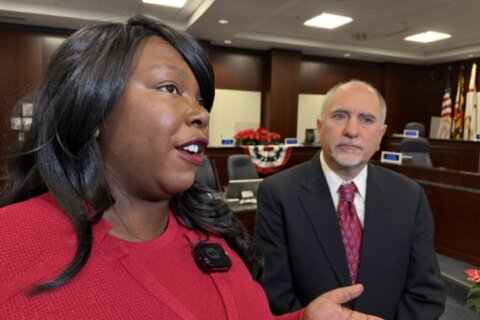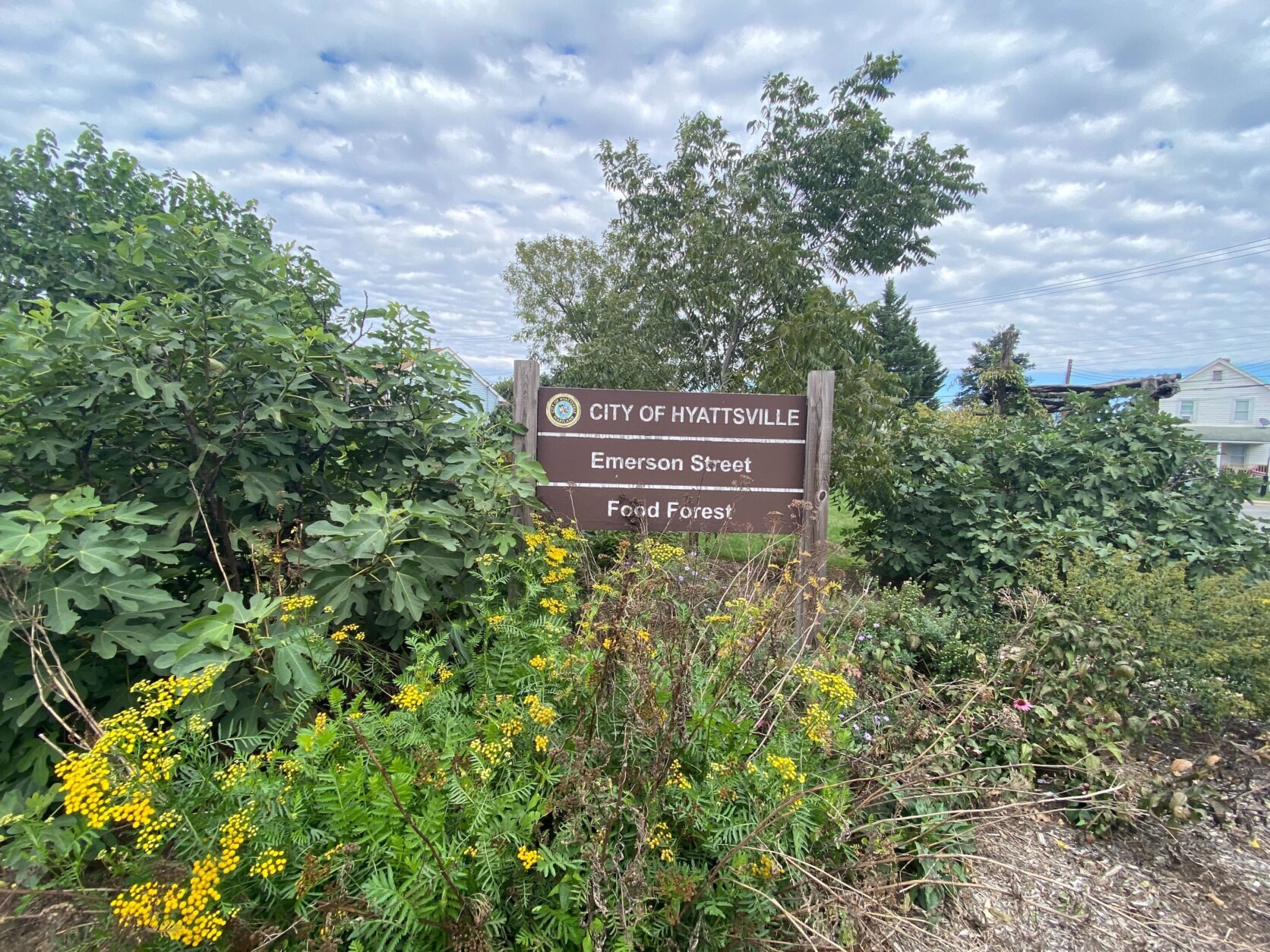
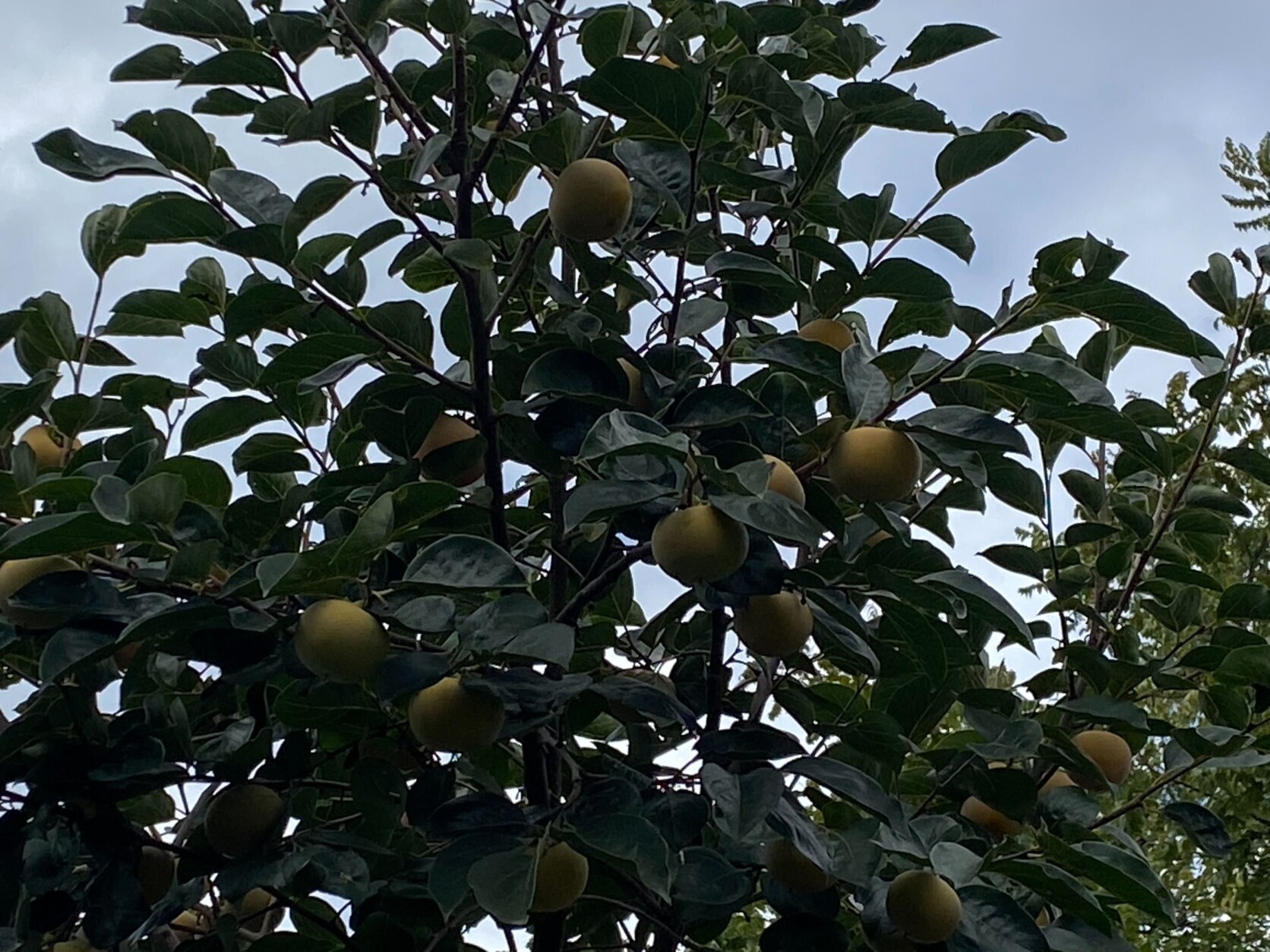
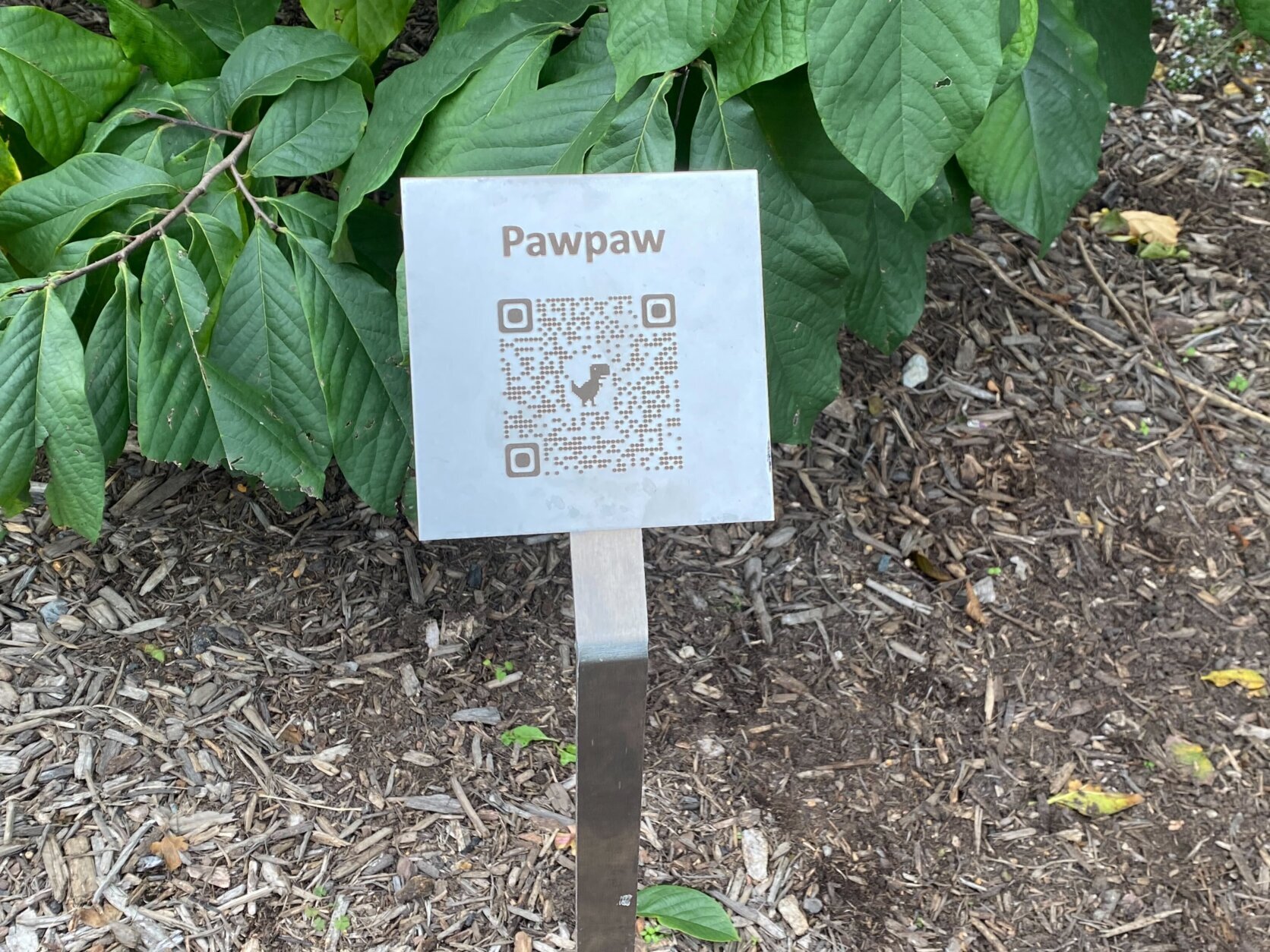
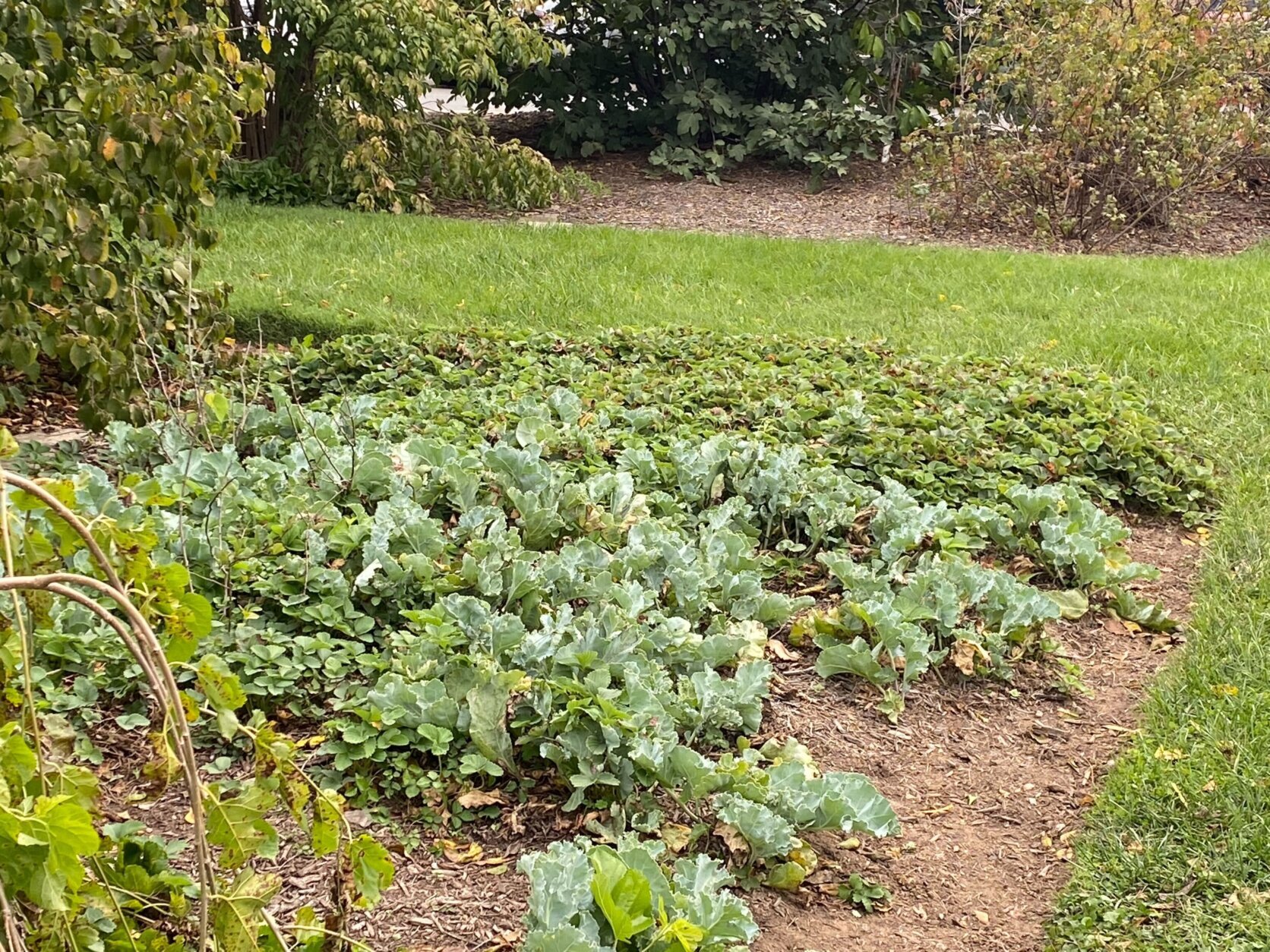
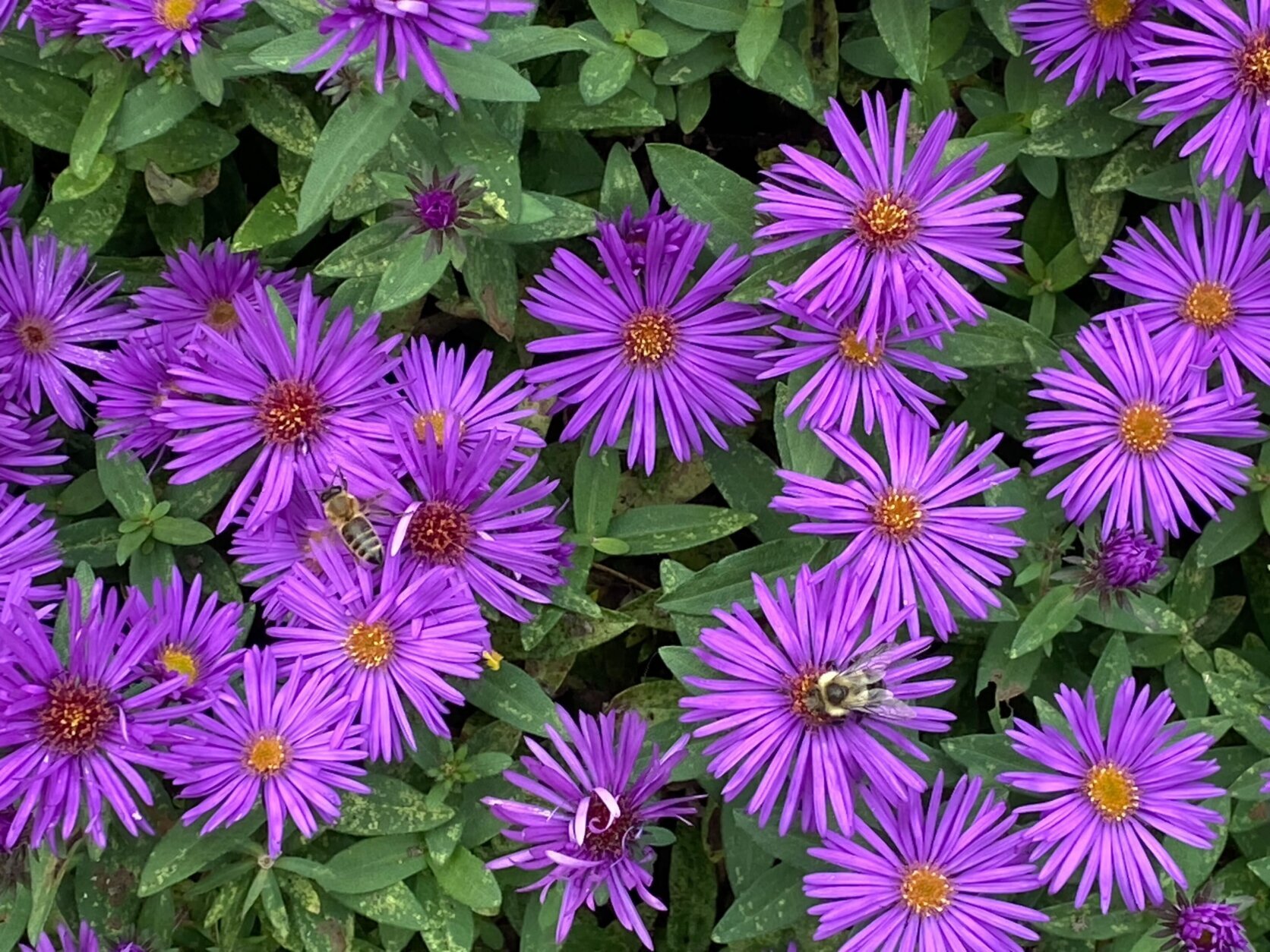
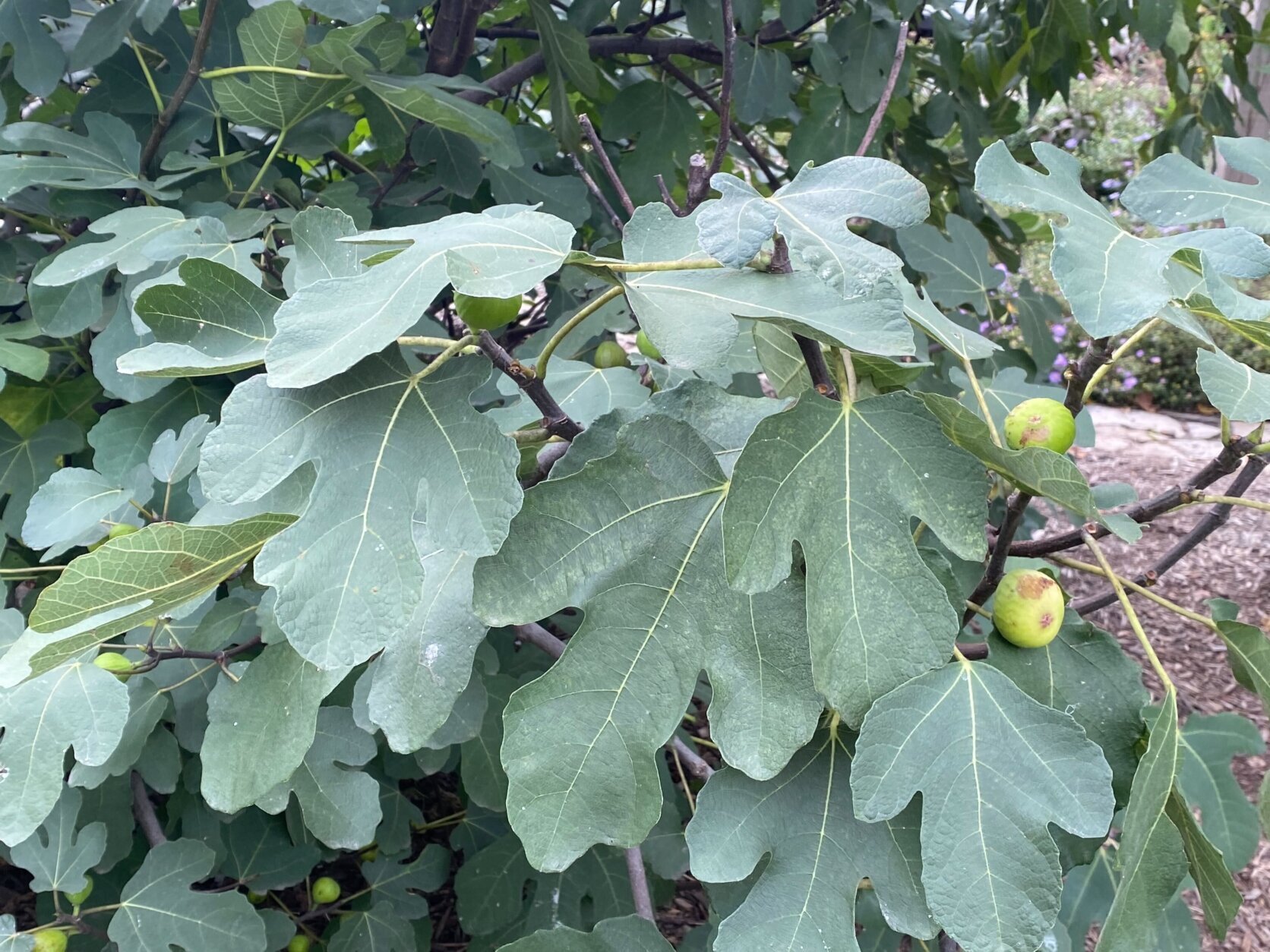
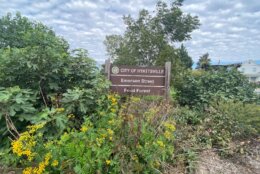

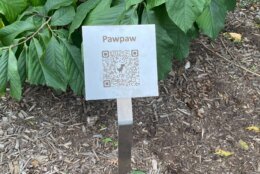
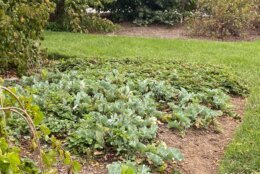
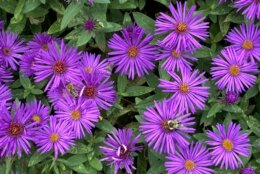
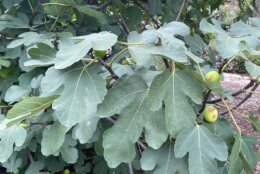
It’s sandwiched between two sets of railroad tracks and sits next door to an auto repair shop. Once upon a time, it was a home, then it became an empty lot surrounded by homes. And for almost the last six years, the city of Hyattsville, Maryland, has been turning it into what it calls a “food forest.”
In the near term, it’s a place for people to come grab fruit, nuts and even some vegetables. But it’s also providing some long-term lessons about food, and how to grow it more efficiently and sustainably as the climate changes.
“Eight or nine months out of the year, there’s something here,” said Dawn Taft, an arborist and the manager of environmental programs in Hyattsville.
Currently, it’s figs, but soon, it will be persimmon growing on the plot of land that’s about a quarter of an acre big.
In early spring, this “food forest” will start offering kale. By the start of summer, berries start to ripen.
“You’re going to get the yaupon tea all year round, pretty much,” Taft said.
It’s a far cry from what used to be here.
“This was just an abandoned lot with a lot of nefarious behavior going on, and we were getting calls all the time about what was happening here,” Taft said.
Now, it’s benefiting the community.
“It has really brought this neighborhood together,” Taft said. “Everything from the auto repair to the kids running out of their house to get strawberries from the garden.”
Taft said the garden has given people “somewhere to go, to walk the dog and to share with the kids.”
“When you walk through here and you see a little teeny bopper whose face is covered in blueberries, that’s what it’s done for us,” she said.
The garden was created through a partnership with the University of Maryland, which sits just a few miles north. It is used as a living classroom of sorts for students, while studying how the lessons learned from this little plot of land can have an impact around the rest of the world.
“These are projects that are focused on the nexus between food, energy and water,” Jen Cotting, who is with the school’s environmental finance center. “We call it ‘The FEW.'”
She said they are looking to figure out ways to address food needs with water and energy challenges, and “we’re making sure we’re looking at that holistically and addressing all three as we’re trying to make sure we’re keeping people fed.”
In Hyattsville, this food forest on Emerson Street, and a smaller one on McClanahan, is designed with “permaculture” in mind, meaning the plants self-maintain themselves.
“What one plant takes away, another plant gives back nutrients,” Taft said. As one plant sees its blooming season ends, something else next to it will take its place.
“It’s falling down and it’s producing cover and salvaging the moisture and then decomposing and adding nutrients back for the next thing that’s growing,” Taft said.
Flowers planted around the land draw bees in to help pollinate the garden.
Down the line, water that drips off the roof at the auto body shop next door could end up being captured to use in the garden, instead of seeing it eventually run off into nearby creeks and streams.
Similar projects looking at The FEW are also underway in Tanzania, Nepal and Israel, as Cotting said scientists explore “what are the water challenges and the energy challenges that we’re facing and how do we get really efficient to make sure that we’re doing things as effectively as possible.”



